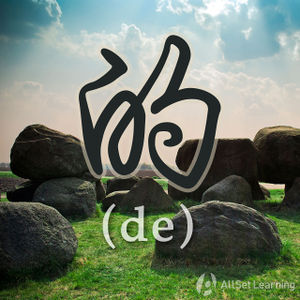Expressing possession with "de"
-
Level
-
Similar to
-
Used for
-
Keywords
In Chinese, possession is marked with the particle 的. This particle work's in a similar way to 's (apostrophe s) in English, but is used much more widely.
Structure
Noun 1 + 的 + Noun 2
The structure is super simple. It will take a bit of time before you realize how truly universal this pattern is. It doesn't matter whether the "Noun 1" is a person, place, or thing, or even if it's a pronoun (like "he," "she," or "it"). The structure stays consistent.
Examples
- 我 的 啤酒。 ("my beer")
- 你 的 葡萄酒。 ("your wine")
- 他 的 书。 ("his book")
- 他们 的 东西。 ("their stuff")
- 小李 的 手机。 ("Xiao Li's cell phone")
See also
Sources and further reading
Books
- Integrated Chinese: Level 1, Part 1 (3rd ed) (pp. 45) →buy
- New Practical Chinese Reader 1 (新实用汉语课本1) (pp. 87) →buy
- New Practical Chinese Reader 1 (新实用汉语课本1)(2nd ed) (pp. 101-2) →buy
- New Practical Chinese Reader 2 (新实用汉语课本2) (pp. 64-5) →buy



